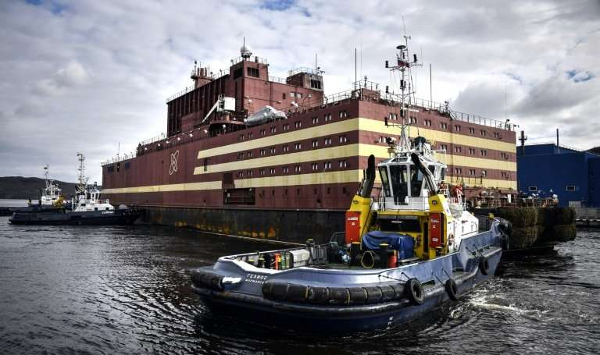NEW DELHI: Russian atomic energy corporation Rosatom has expressed interest in collaborating with Indian companies not only for the construction of large nuclear power plants but also for joint development of medium- and small-sized nuclear power reactors, including floating N-reactors.
Nikita Mazein, vice-president of Rusatom Overseas (a division of Rosatom), said, “Rosatom is developing small and medium-sized solutions based on light water reactor unit of Russian design.” There is a need to explore the possibility of such projects in the coastal areas of South Asia as this nuclear energy segment provides an opportunity for boosting Indo-Russia nuclear cooperation, he said. A Rosatom spokesperson told TOI that Mazine pitched for the joint collaboration on small nuclear reactors during the recent 11th Nuclear Energy Conclave here.
“In Russia, we have commissioned the first floating nuclear power plant and will operationalise it this year,” Mazein said. Akademik Lomonoso, the world’s first floating nuclear station, has been brought to the Russian port city in Pevek in the country’s far east, where it will be connected to the grid and will start operation by year-end. The floating station has two KLT-40S reactor units that can generate up to 70 MW of electric energy and 50 Gcal/hr of heat energy during normal operation. This is enough to run the electricity demand of a town populated with 1 lakh people. The floating N-plant could be a boon for far-flung areas in India which are still without power.
The senior Rosatom official said, “For those countries that don’t have significant demand or system capacity to absorb large-capacity power units, a similar solution with 50-100 MW units can be useful. We are also in talks with some international partners for development of such units in third countries. We want to enhance our cooperation beyond the execution of present projects.”
Rosatom, the main equipment supplier for Tamil Nadu’s Kudankulam N-plant, said Russia and India have an action plan for the construction of a second nuclear plant besides the TN plant as the two countries are planning to set up six nuclear reactor units at the new site. “We are discussing with our partners in India how to execute the localisation agreement signed three years ago. We are talking with stakeholders about developing new power plant projects,” he added.
He said India’s needs to reduce cost and recurring costs for nuclear power to make it more competitive. He said that Indo-Russian cooperation could be expanded to other sectors like health and agriculture.
Source: ToI
Image Courtesy:Phys
You may also like
-
Trade Connect E-platform For Exports Is Single Window, Fast, Accessible And Transformational: Shri Piyush Goyal
-
Dot Simplifies Approval Processes For Telecom Licenses And Wireless Equipment
-
Coal Production and Supply Trends on Positive Trajectory
-
Union Minister To Release Booklets On Promotion Of Indigenous Species & Conservation Of States Fishes
-
2nd India-Japan Finance Dialogue held in Tokyo on 6th September, 2024
